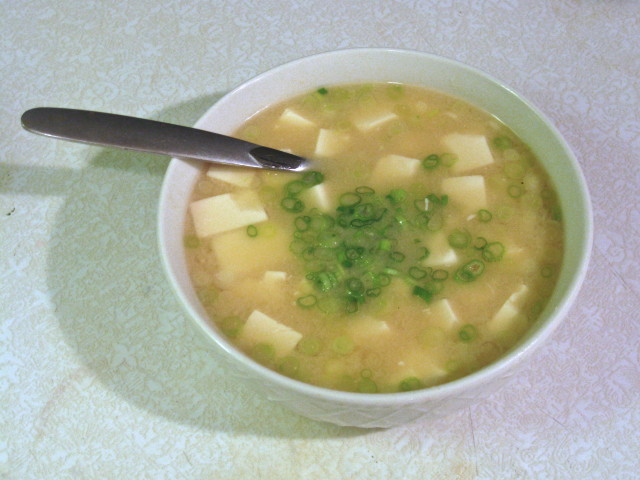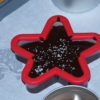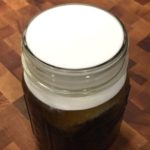
Miso soup is a very simple, but satisfying soup very popular in Japan and the typical opening dish in every japanese menu (at least in the united states). It is named after the miso paste that is the base of the soup, and is essentially a fermented soy paste. It is salty and nutty, reminding my of tarama a heavily sated fish roe used in greek cousin. It comes in different varieties ranging in color and flavor, from mild to strong based on the salt content and the misoness I guess. It is produced by fermenting rice, barley and/or soybeans, with salt and the fungus kōjikin, the most typical miso being made with soy. White and red (shiromiso and akamiso) are the basic types of miso available in all of Japan as well as overseas. Different varieties are preferred in particular regions. For example, in the eastern Kantō region that includes Tokyo, the lighter shiromiso is popular, while in the western Kansai region encompassing Osaka, Kyoto, and Kobe, darker brownish hatchomiso is preferred, and akamiso is favored in the Tokai area.
For a typical miso soup as I was told from Asako, my Koumpara we need very few ingredients. One of them is dashi or fish broth that you can make home. However, if you use home made you will lose something of the essence of the food. Look at the ingredients:

- Miso (from the box)
- Tofu (from the box)
- Dashida (from the package)
- Soy sauce (from the bottle)
- Green onions ( I forgot to include them in the picture, probably because I was so fascinated by the packaged food)
So you see home made broth will be out of his game here. It will be too much for a dish that did not ask for that much.

Start by bringing to a boil 2 cups of water.

with 1 tsp of dashida (the powder dashi).

While this boils bring your attention to the scallions, the only actual fresh ingredient.

Chop it finely.

Separate the green from the white part. We will cool the white part, while we will use for garnish the green.

Open the packaged silken tofu. Yeah. Stop. Silken tofu, it is called silken because it is very smooth and very fragile. It is not used in miso soup, but I personally like the texture, which is very nicely goes with the miso philosophy.

Carefully remove it from the package.

And slice it lengthwise. parallel to the cutting board.

Follow this with horizontal and vertical to dice it.

Add into the soup

and follow it with the white part of the onion. We need to cook this slightly to make sure it drives some of the oniony burning out. Have the soup on a low, low simmer.

Take three tbsp of miso in a bowl.

Add tho this 1/2 cup or more it is up to you.

Whisk to combine.

And add it to the soup. Simmer for 5 more min.

Serve and garnish with the green part of the onion.
As simple dish from a country that taught as all what simple really means. I occasionally add rice noodles, or frozen veggies, to make a meal out of it.












Leave a Reply